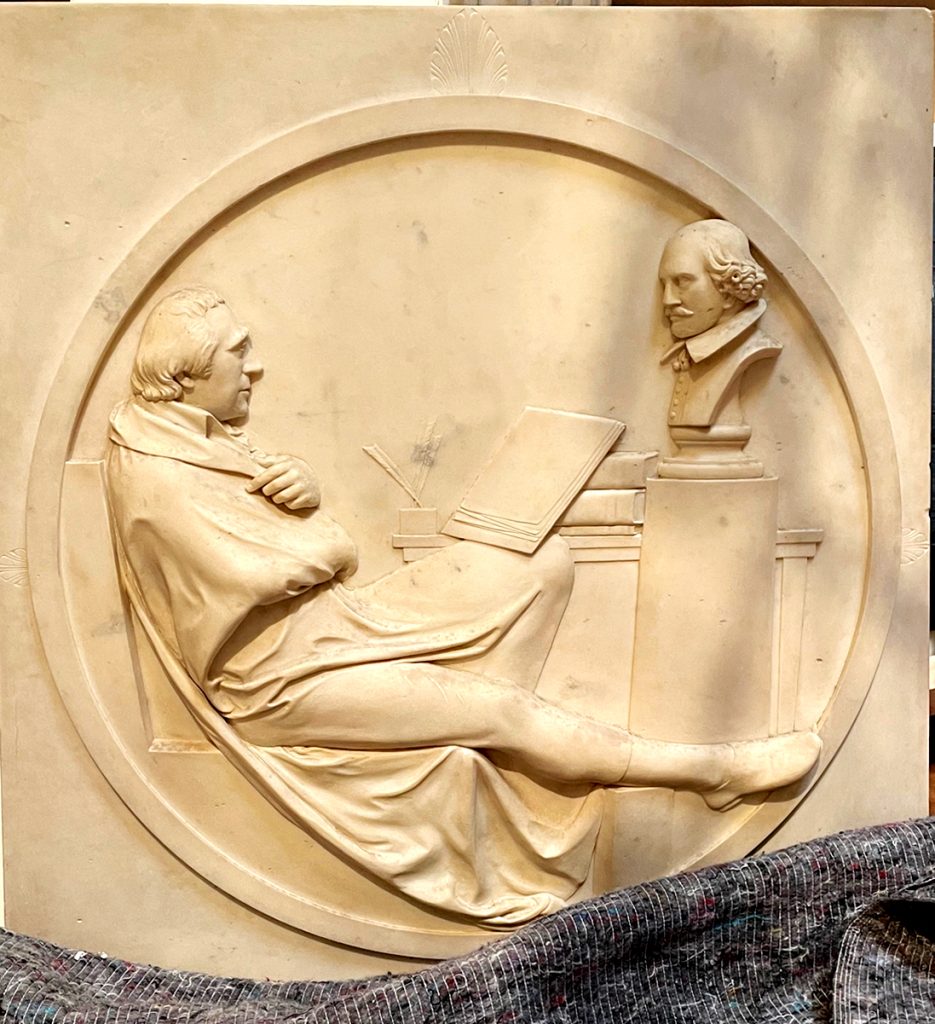John Flaxman
(There is a new memorial in the Lady Chapel to George Steevens, a one time resident of Hampstead and commentator on Shakespeare, which was created by John Flaxman)


William Blake had a short, disastrous term at the Royal Academy School in 1779, but he did make a lifelong friend. John Flaxman’s cool, Neo-Classical style was rather different from Blake’s, but Flaxman became a generous champion of Blake’s work, and helped support him and his wife Catherine by directing commissions their way.
Like Blake, Flaxman was born in humble circumstances and lacked a formal education. But he had an innate talent for drawing, and inherited his father’s skills as a plaster cast maker. At the age of 15 he entered the Royal Academy Schools and began to win prizes.
Early on, he worked for Josiah Wedgwood, designing and casting the low-relief Classical decorations on the firm’s celebrated blue stoneware. For some years he studied in Italy, earning a living making medallions and memorials in low-relief, and later, as he became more celebrated, sculptures in the round. There are examples in Westminster Abbey, St Paul’s and many other churches. He became known as one of the finest sculptors of the age, the British equal of Antonio Canova.
At the Academy, as Professor of Sculpture, he gave knowledgeable, if dry, lectures, many of which were published. So too were his many illustrations of classical literature. notably of Homer, Aeschylus and Dante, which his Neo-Classical style suited very well. Less interested in Shakespeare, he yet did some very fine low reliefs for the front of Covent Garden theatre, featuring Shakespeare himself and characters from The Tempest and Macbeth.
His memorial to George Steevens is a good example of his classically-balanced, beautifully-crafted style. More than merely academic, it has an element of ironic humour. A self-regarding Steevens lounges in front of his nervous-looking subject, ready to emend his work at will.